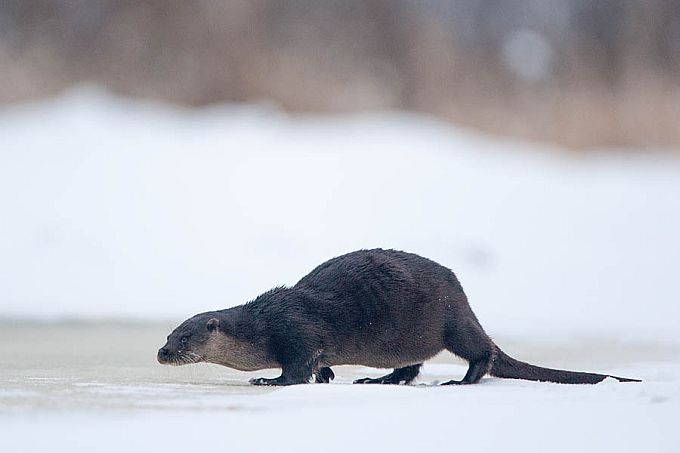Video recorded by Fleur, LK forum
Photo: Arne Ader
Translation Liis
Estonian text posted 09.12.2017
The first encounter with the otter was about 10 days back and was very brief
Otter Saarmas Lutra lutra
During the last fifteen years otters have widened their springtime and autumn foraging grounds. This shows nicely on sandy beaches – a row of tracks and in places a dragging tail trace between them. On beaches with vegetation their movements are less easily noticeable unless you come across a train oil smelling heap of excrements or remnants of fish in early morning.
Adult otters are attractive mustelids, and the largest semi-waterliving predators in our nature. The body length of really large males is up to one metre and twenty centimetres; the adult males are up to about one third heavier than females and young animals (about ten kilos) and larger. The length of the tail adds another half body length.
A slim, streamlined body shape and short legs. A dense, beautiful, water-repelling and extremely durable fur coat. There are up to fifty thousand hairs in a square centimetre of an otter’s winter coat! Between the short hairs of the undercoat small air bubbles are retained and so only the outer hairs of the otter’s coat become wet.
Activities start mostly in evening twilight. How and by what aids do otters navigate in muddy water and darkness? Their sight is quite good in water but for hunting the long and sensitive whiskers are a significant help for forwarding information about movements in the water. On diving both nasal openings and ears are closed and an otter stays under water only barely half a minute. On swimming only the nose and eyes show. What do they feed on in autumn and winter? In inland waters they hunt for frogs that have crawled into the bottom mud of water bodies for winter, molluscs and crayfish, in the sea fish moving near the shore. On a typical nightly hunting trip they cover three to ten kilometres.
When rivers freeze they move upstream, to areas with less ice and more rapid flow, sometimes into smaller creeks or spring-fed ditches.
The food requirement is up to one – one and a half kilo per day for survival, and obtaining this in severe winters can be quite complicated. In spring otters will have lost up to a third of their autumn body weight.
The young animals of this year spend the winter with their mother.
Their territories of activity are marked with excrement heaps: on rocks, tree stumps, banks. The colour of a fresh excrement heap is black or slightly greenish, and we can see fish scales in it as well as bones, and as said it smells rankly of train oil. Older heaps turn greyish.
When there is snow on the ground we will try to read the traces of winter activities and the webcam may show if shore areas are abandoned and the living place will be changed because of scarcity of food?
Otter



